| Discovering other portraits |
 |
Around one thousand examples of "Fayum portraits" are known to exist today.
In addition to the three female portraits taken from the Louvre collections, visitors can encounter a selection of other "Fayum portraits" in the presentation room. Projections of various artworks thus correspond to the spontaneous interest generated when actually viewing the artworks, including visitor requests for an overview of the corpus of works and the opportunity to go up close to a particular work of interest for a better look. Similarities and differences therefore become apparent in the ways that the features of each individual are depicted. Let us look at these areas more closely here. |
 |
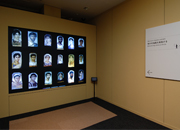 |
|
 |
| Admiring the artist's touch |
 |
| All three women are portrayed with their faces slightly aslant and all bear solemn expressions. Yet each artist has a particular skill in rendering the model's features and individuality realistically, through a meticulous depiction not only of the skin and hair, but also of the feel of the fabrics and jewelry. By comparing the painters' various artistic approaches, a large-screen ultra-high-definition program allows visitors to see the range of effects possible when using the encaustic (wax-based) painting technique. |
 |
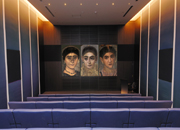 |
|
 |
 |
| By tracing their fingers on the actual-size reproductions of the portraits, visitors can study at their leisure those areas of particular interest to them—such as the garments and jewelry worn by the female models or the particular technique employed by the artist—and enlarge them for a closer look. This multimedia device is at the viewers' disposal at any time throughout the visit. |
 |
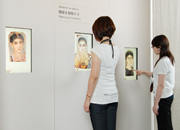 |
|
 |
| Understanding the background context |
 |
| The Fayum portraits came into being at the crossroads of the three ancient civilizations of Egypt, Greece, and Rome—but how and when did they encounter and influence one another? This image sequence traces the geographical and historical evolution of these three civilizations, particularly in terms of the political and religious context and of the representation of the human figure. |
 |
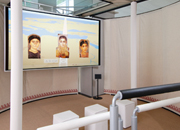 |
|
 |
 |
| The mummy of Eudaimonis in the Louvre's collections has retained its painted portrait and is a perfect illustration of the mixing of these three cultures. An examination of this mummy according to various thematic contexts—such as portrait depiction, pictorial technique, or funerary rites—will clearly show how this work testifies to such cultural intermingling. Visitors can therefore enjoy a preview experience of a display that will be introduced into the Musée du Louvre in Paris. |
 |
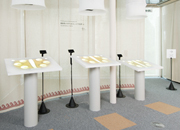 |
|
 |
| Deconstructing / reconstructing the painting, layer by layer |
 |
| In this display, which is placed on a specimen box containing replicas of the materials used to create an encaustic painting, digitally-reconstructed images based on scientific analyses chart the production process. By using their own hands to work the display, visitors are able to peel off layer after layer of the painting to reveal a production process beyond the range of the naked eye, and thereby understand the technique of stacked layers of paint characteristic of encaustic painting. |
 |
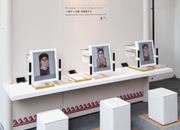 |
|
 |
| What impression do these faces make on you? |
 |
| What idea did these people who lived 1800 years ago wish to convey by leaving behind these portraits of themselves? With the three pieces on display, as well as other Fayum portraits, the exhibition is designed to allow visitors to give their impressions of the works they liked using key words. |
 |
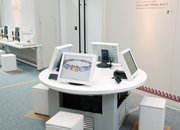 |
|

